Слайд 2 Now there are innumerable branches of science. The three main subdivisions

are
Physical sciences
Earth Sciences
Life sciences
Слайд 3Physical sciences are the sciences that study about non-living matter.

Слайд 4Chemistry: It deals with the study of matter and its association with

energy. Now chemistry has several other subcategories like organic chemistry, inorganic chemistry, nuclear chemistry, biochemistry etc.
Слайд 5Physics: This is basically a natural science and it deals with the
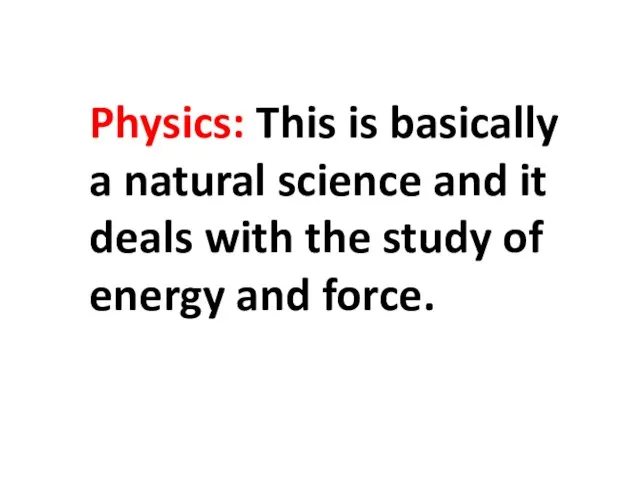
study of energy and force.
Слайд 6Astronomy: The study of the universe beyond the Earth's atmosphere.

Слайд 7Earth Sciences:
Earth sciences are sciences that deal with the scientific study of

earth. Some of the subjects that earth sciences comprise of are: geology, paleontology, meteorology, seismology, geomorphology etc.
Слайд 8Geology: The science of the origin, history, and structure of the Earth,
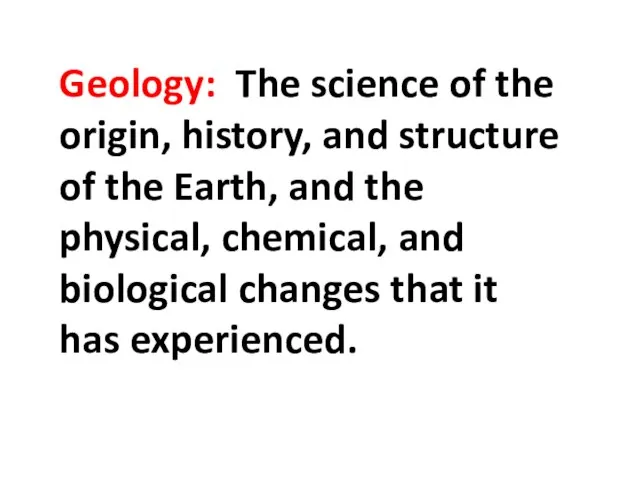
and the physical, chemical, and biological changes that it has experienced.
Слайд 9Oceanography: The exploration and study of the ocean.
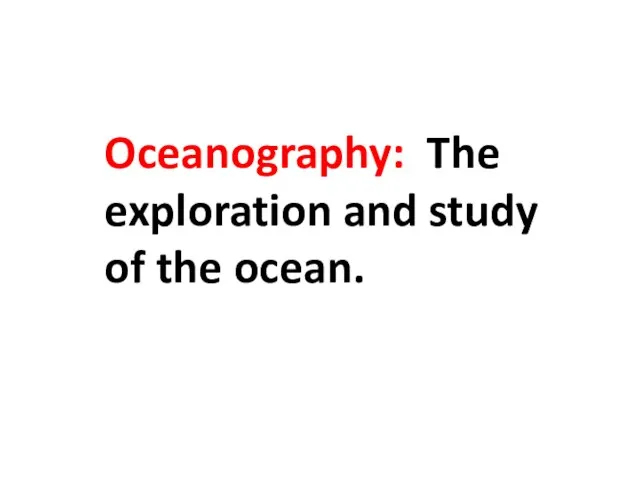
Слайд 10Paleontology: The science of the forms of life that existed in prehistoric
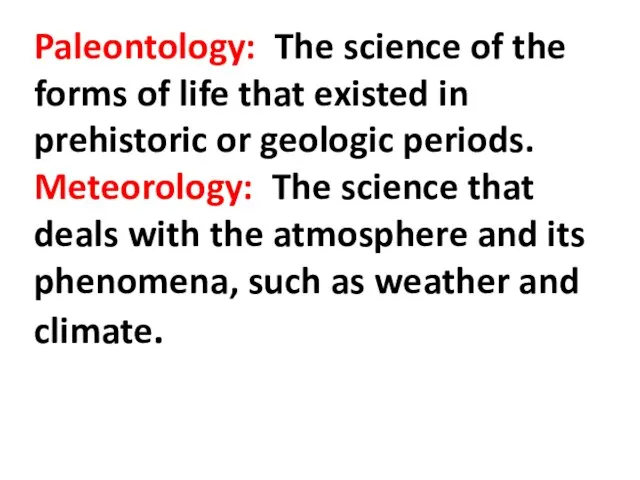
or geologic periods.
Meteorology: The science that deals with the atmosphere and its phenomena, such as weather and climate.
Слайд 11Life sciences are basically the branches of science that study the living
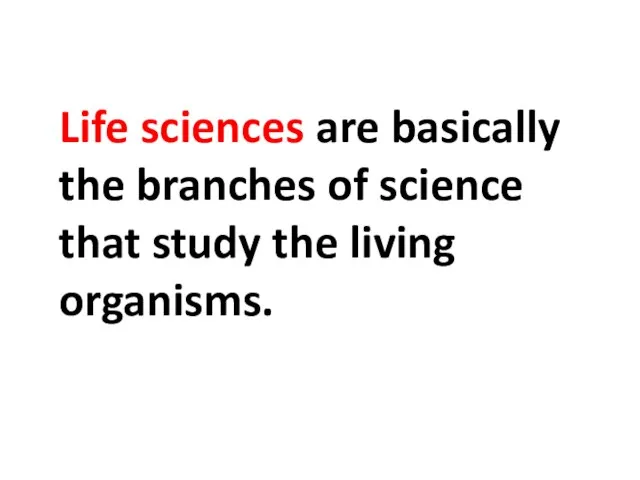
organisms.
Слайд 12Biology: This branch of science deals with the study of the living
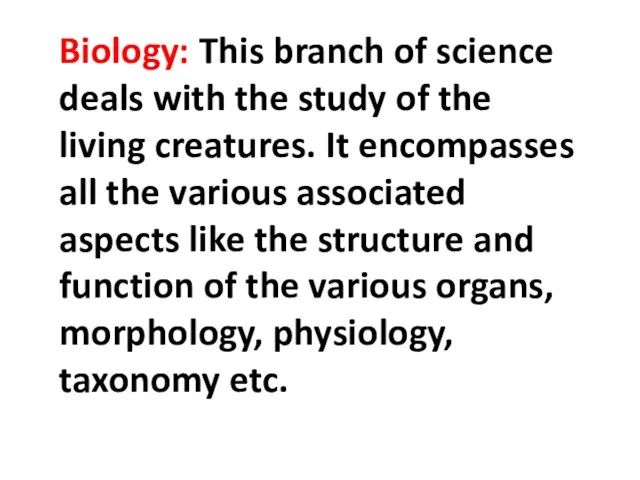
creatures. It encompasses all the various associated aspects like the structure and function of the various organs, morphology, physiology, taxonomy etc.
Слайд 13Botany and Zoology: These two branches of science deal with the study
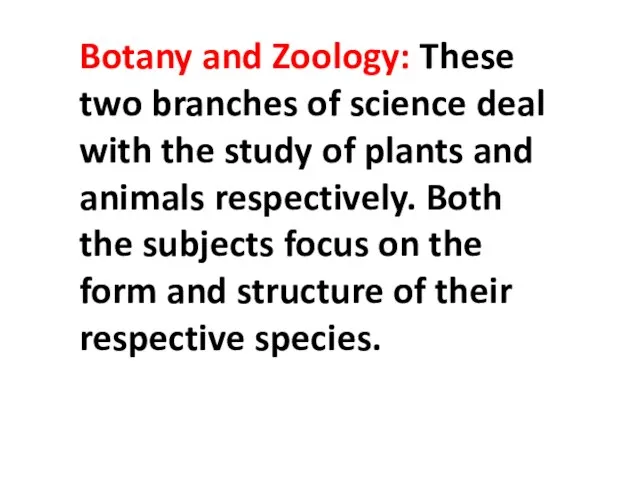
of plants and animals respectively. Both the subjects focus on the form and structure of their respective species.
Слайд 14Ecology: It is the branch of science that studies about the relationship
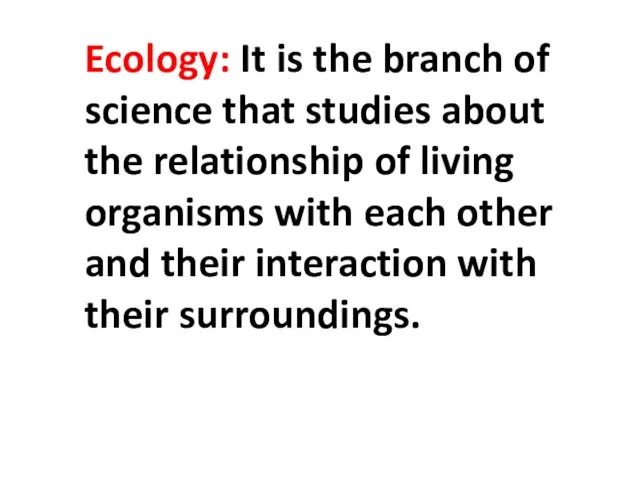
of living organisms with each other and their interaction with their surroundings.
Слайд 15Genetics: It deals with the genetic makeup of the living organisms.















 Лекция 1
Лекция 1 «Питание вашего ребёнка Когда надо беспокоиться?»
«Питание вашего ребёнка Когда надо беспокоиться?» Архитектура
Архитектура Эффективный отдел продаж Руководитель отдела продажИнтернет группа RIA.ua
Эффективный отдел продаж Руководитель отдела продажИнтернет группа RIA.ua Экологические проблемы космического масштаба
Экологические проблемы космического масштаба Презентация по теме:«ПИЩЕВАРИТЕЛЬНАЯ СИСТЕМА»
Презентация по теме:«ПИЩЕВАРИТЕЛЬНАЯ СИСТЕМА» Заселение Дальнего Востока России
Заселение Дальнего Востока России Экипажи Astana Motorsports
Экипажи Astana Motorsports Международная валютная корзина
Международная валютная корзина Chanel SS21. Alberta Ferretti SS21. Вдохновение
Chanel SS21. Alberta Ferretti SS21. Вдохновение Правописание О-Ё после шипящих и Ц в корнях, суффиксах всех частей речи
Правописание О-Ё после шипящих и Ц в корнях, суффиксах всех частей речи Презентация на тему ПРИРОДА ЕВРОПЕЙСКОГО СЕВЕРА
Презентация на тему ПРИРОДА ЕВРОПЕЙСКОГО СЕВЕРА Масленица
Масленица Презентация на тему Характеристика стран ОПЕК
Презентация на тему Характеристика стран ОПЕК  Автоматизация звука Р
Автоматизация звука Р Воронежская область
Воронежская область Умножение вектора на число
Умножение вектора на число Друзья…
Друзья… Тема: Древние тюрки
Тема: Древние тюрки Чемы мы можем научится подгядывая за животными и растениями?
Чемы мы можем научится подгядывая за животными и растениями? Масленица
Масленица Презентация на тему Cолнце Общие сведения
Презентация на тему Cолнце Общие сведения  Russian is cool
Russian is cool Презентация на тему Измерительные приборы
Презентация на тему Измерительные приборы  МиГ-29
МиГ-29 Презентация Основные противоречия общества, подтверждающие необходимость данной науки
Презентация Основные противоречия общества, подтверждающие необходимость данной науки  Презентация на тему Художественная культура
Презентация на тему Художественная культура От первых счётных приборов до персональных компьютеров
От первых счётных приборов до персональных компьютеров